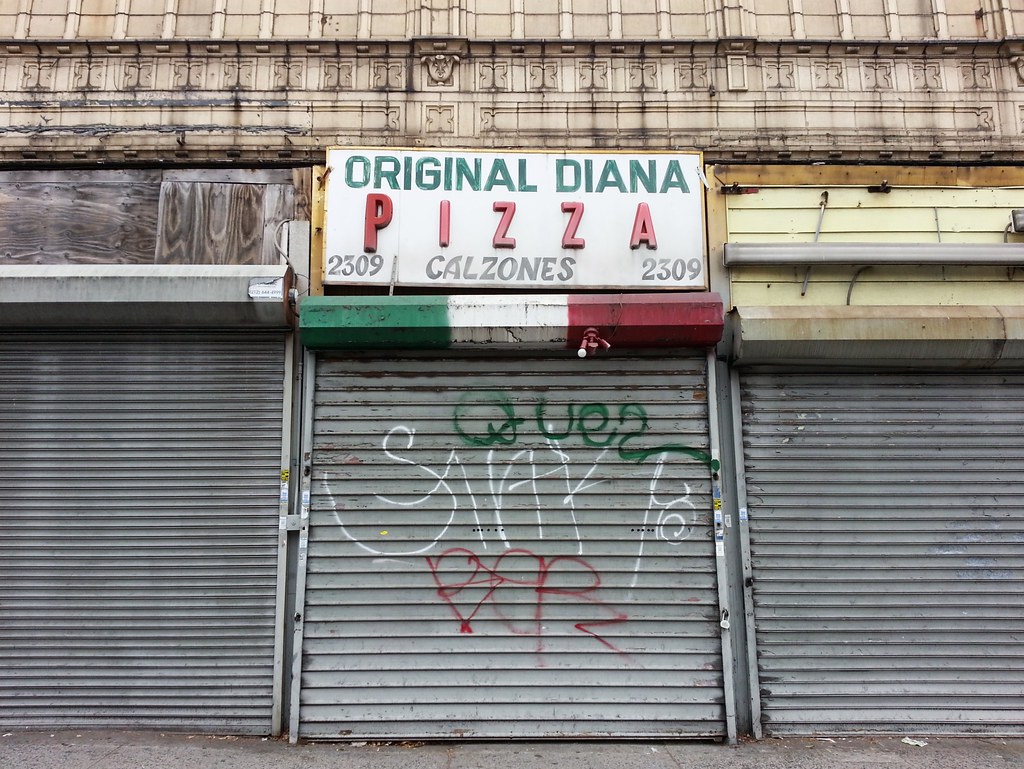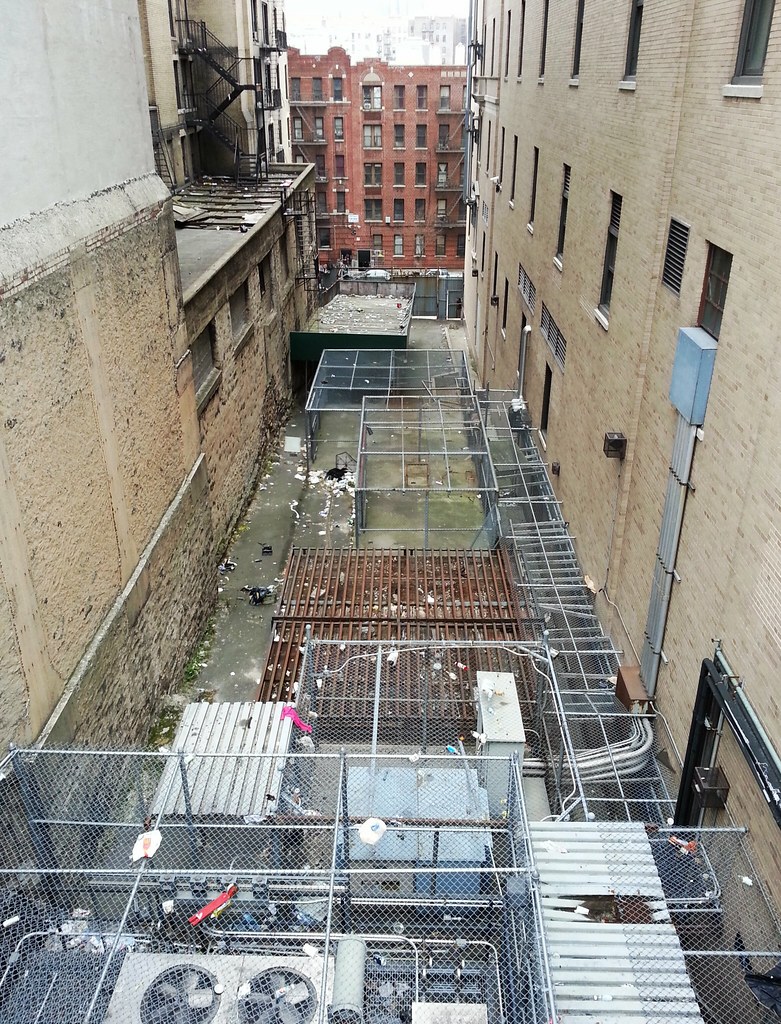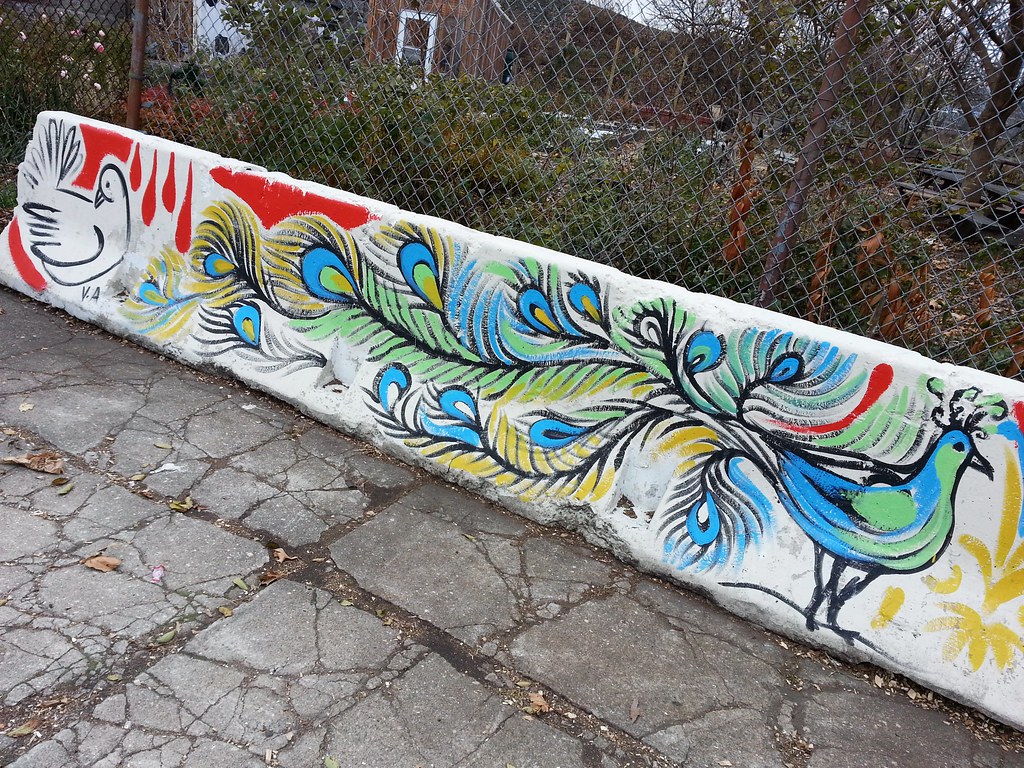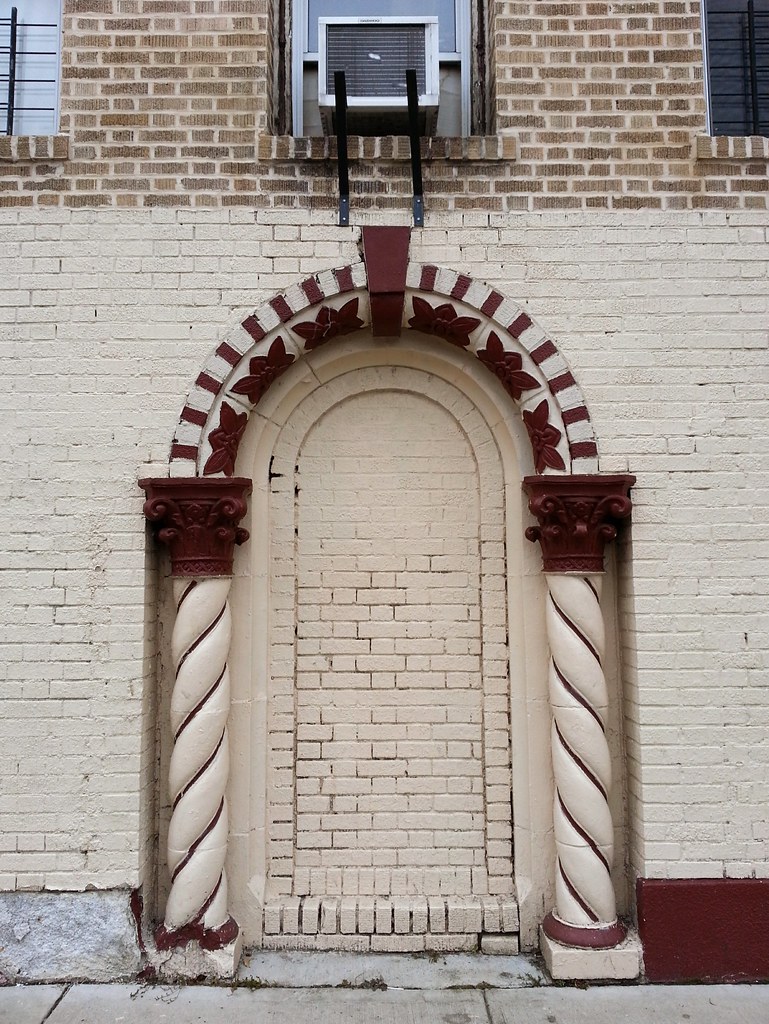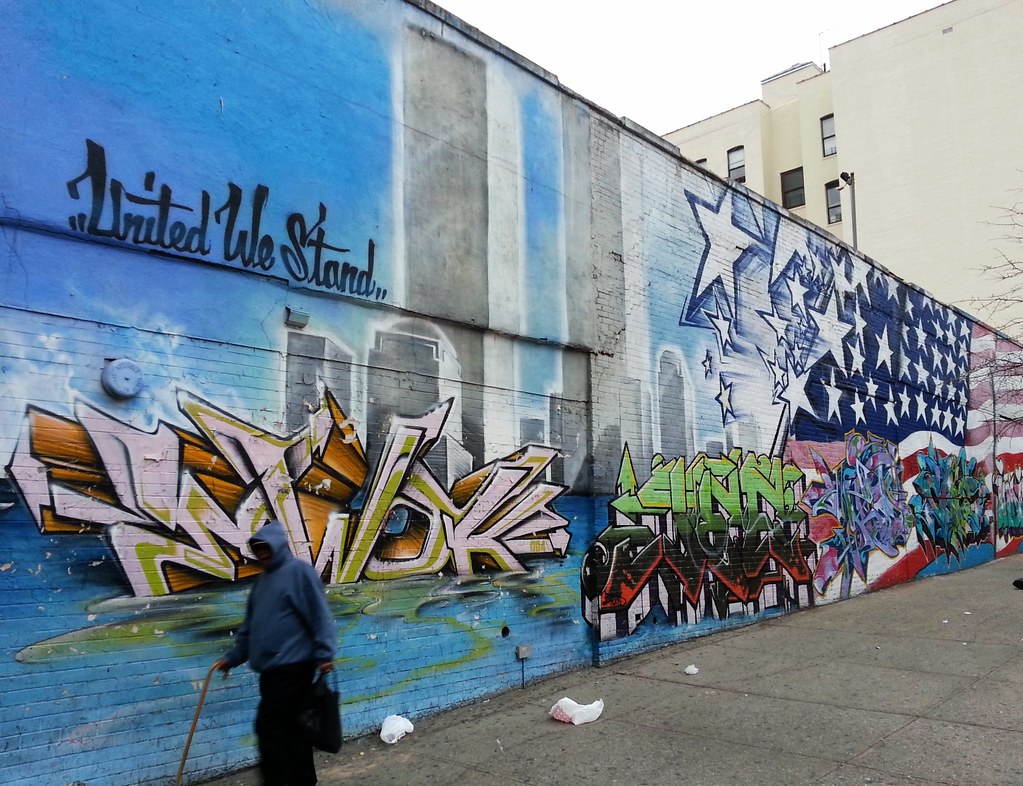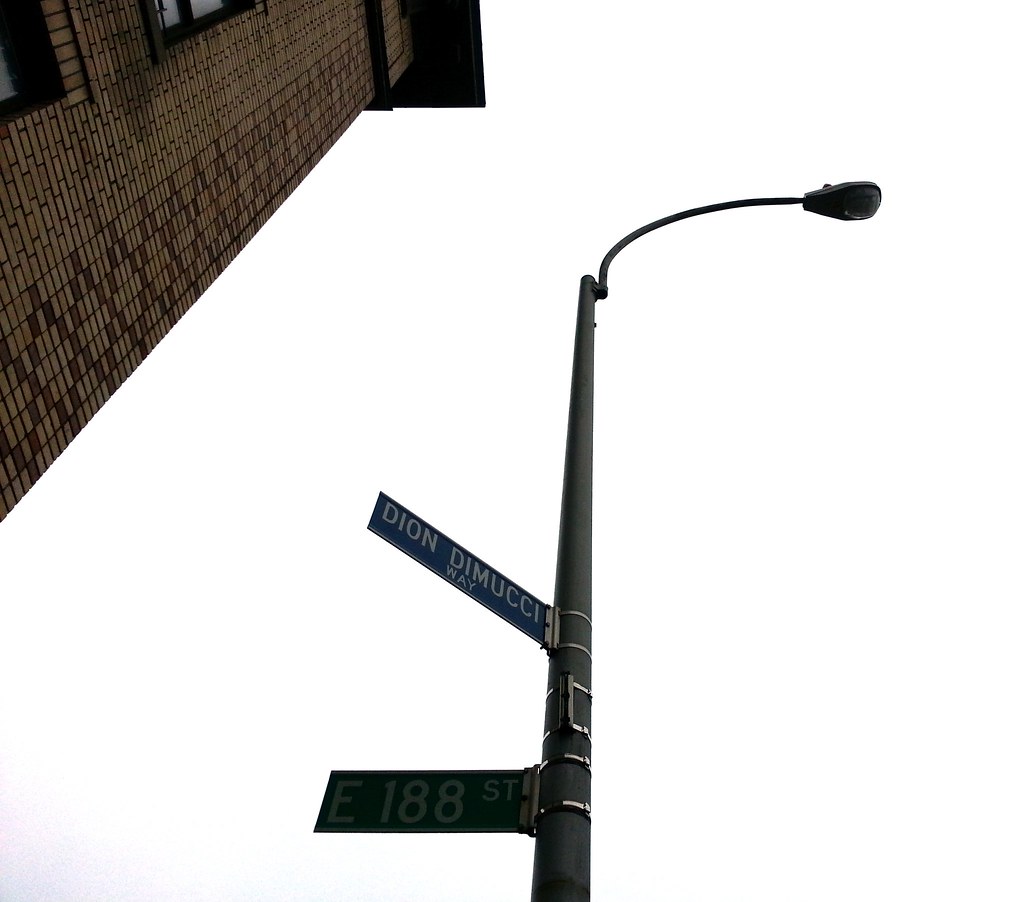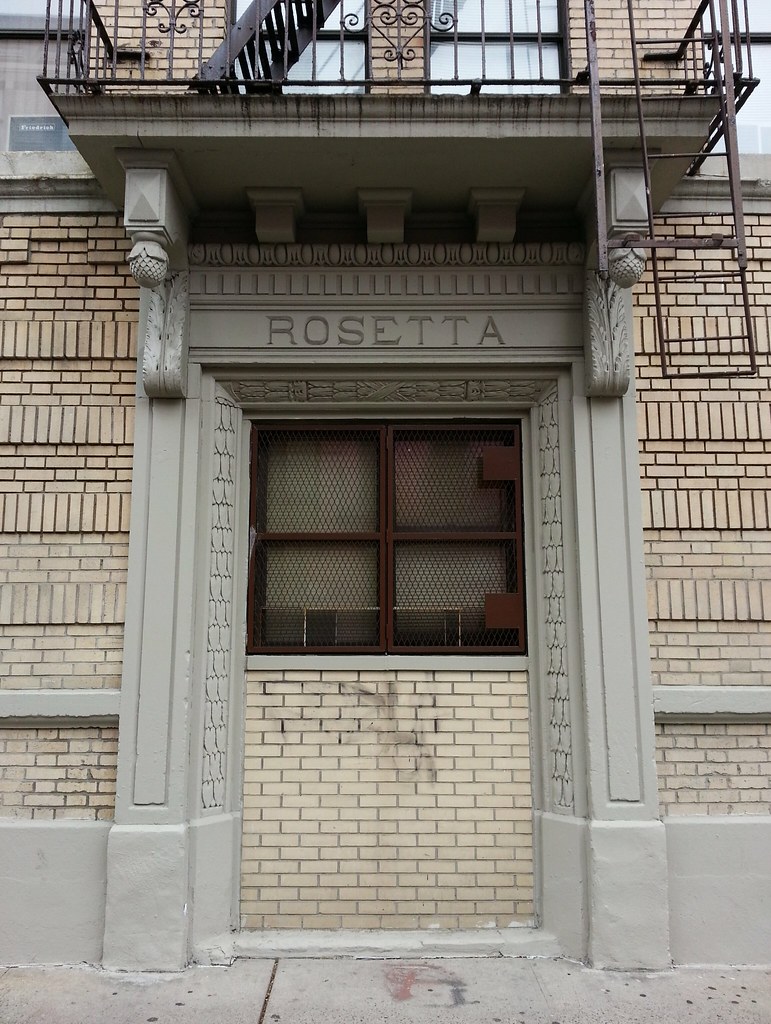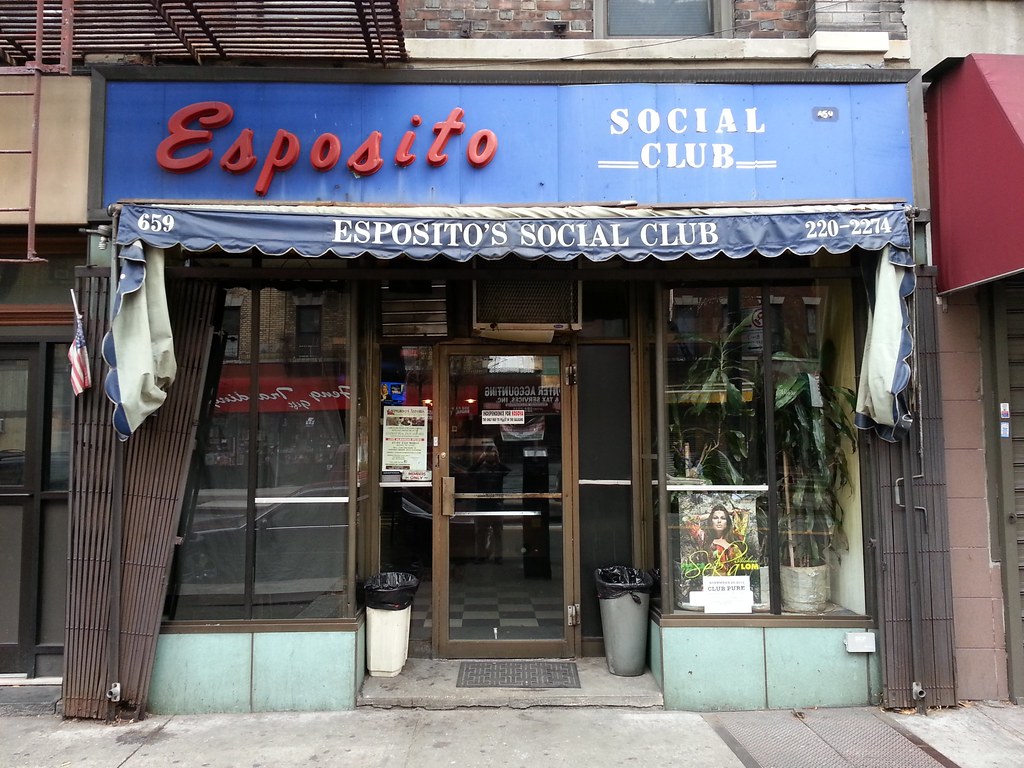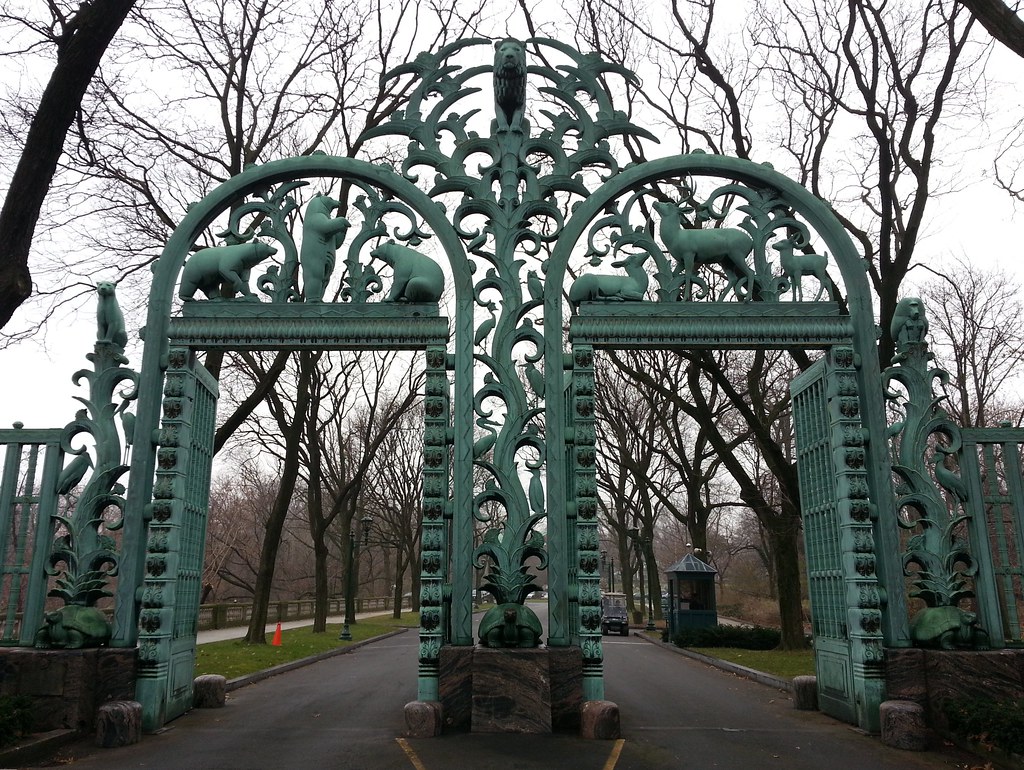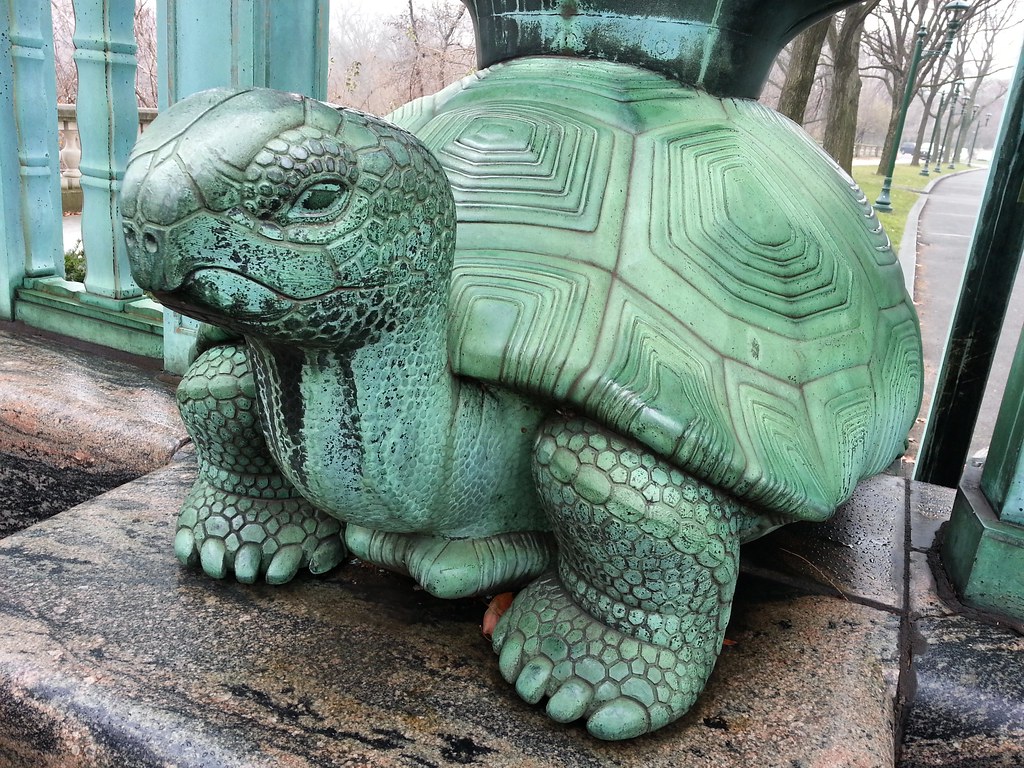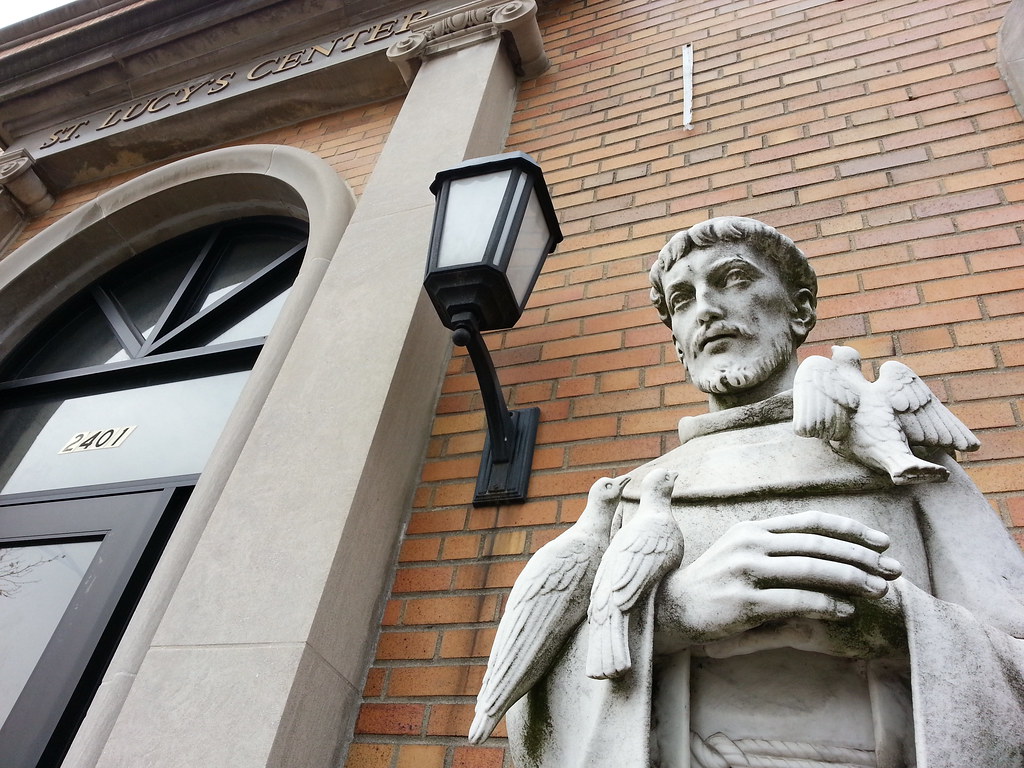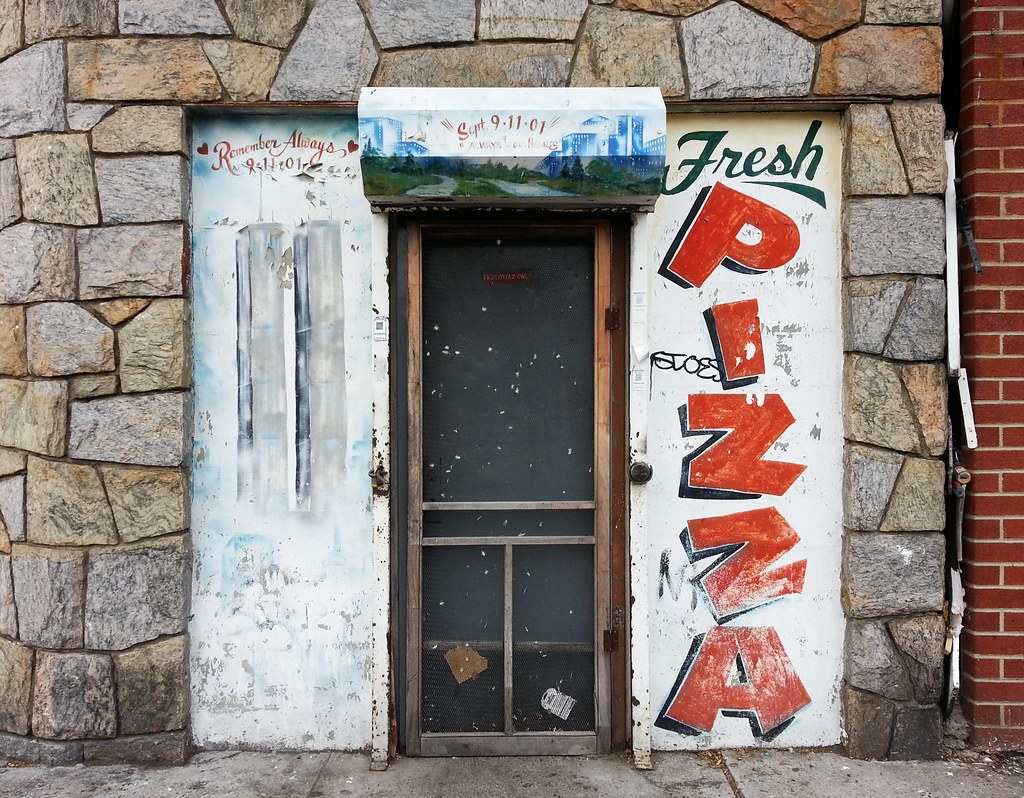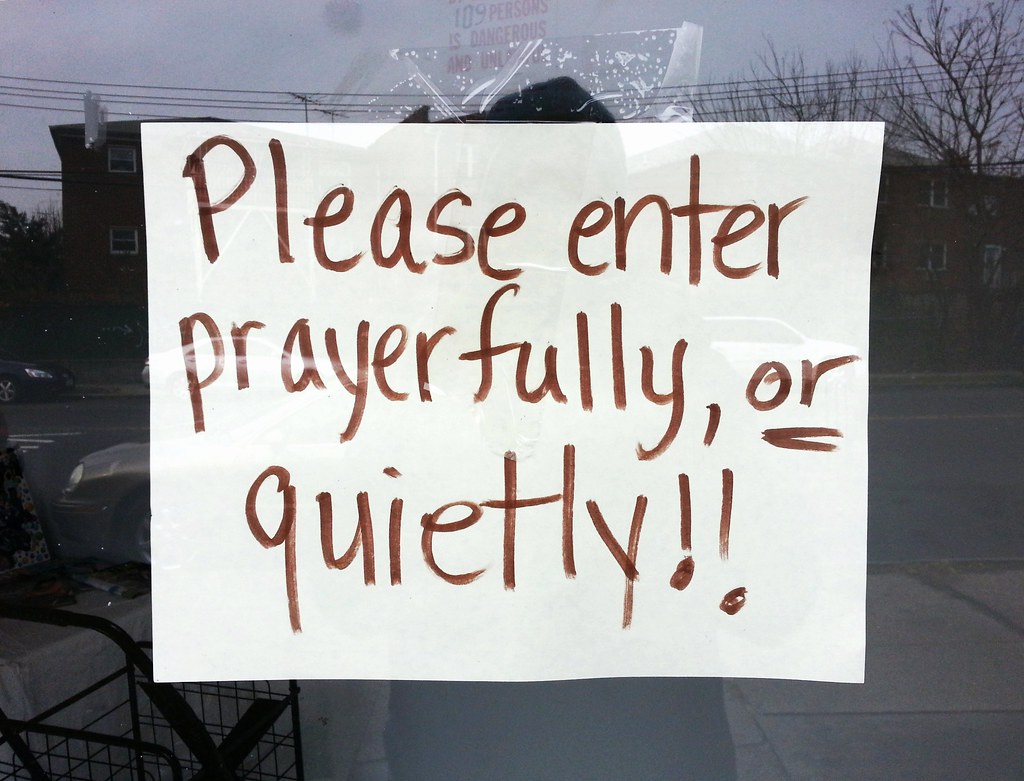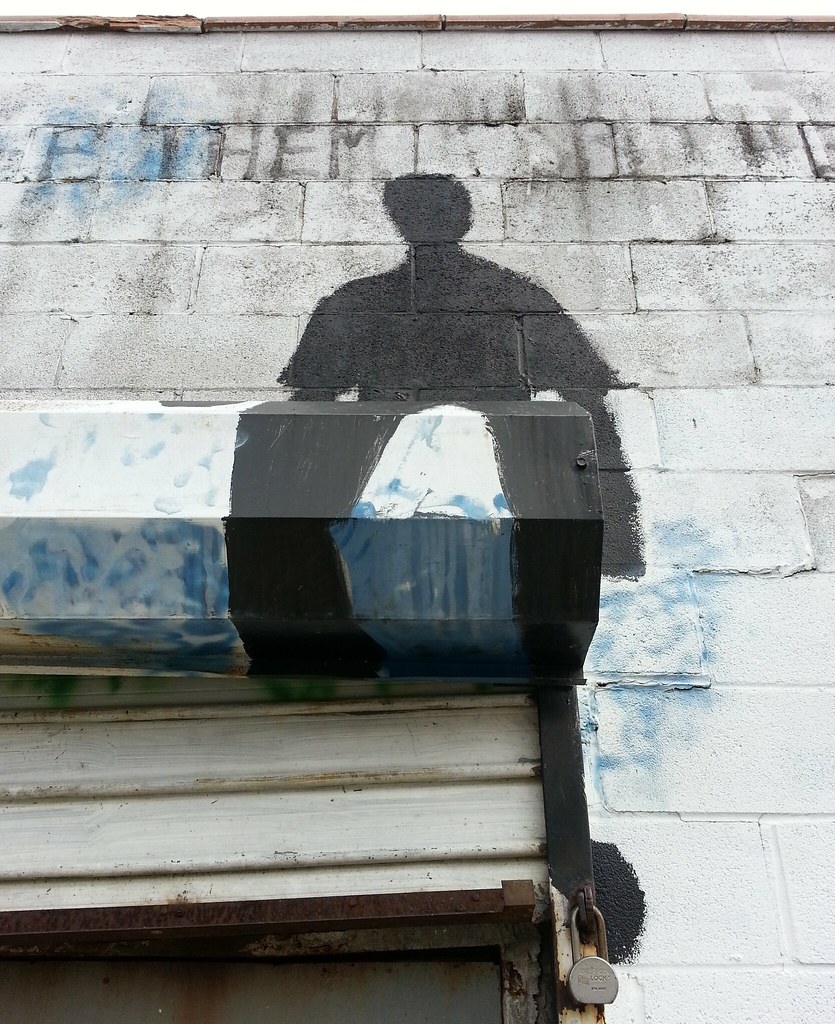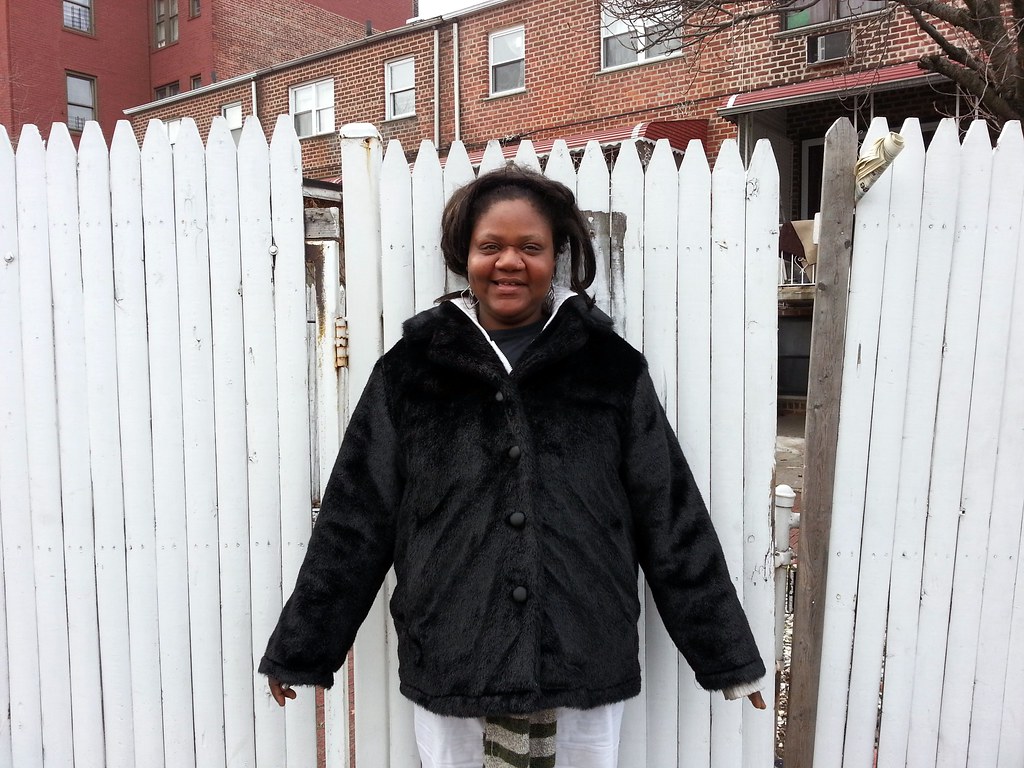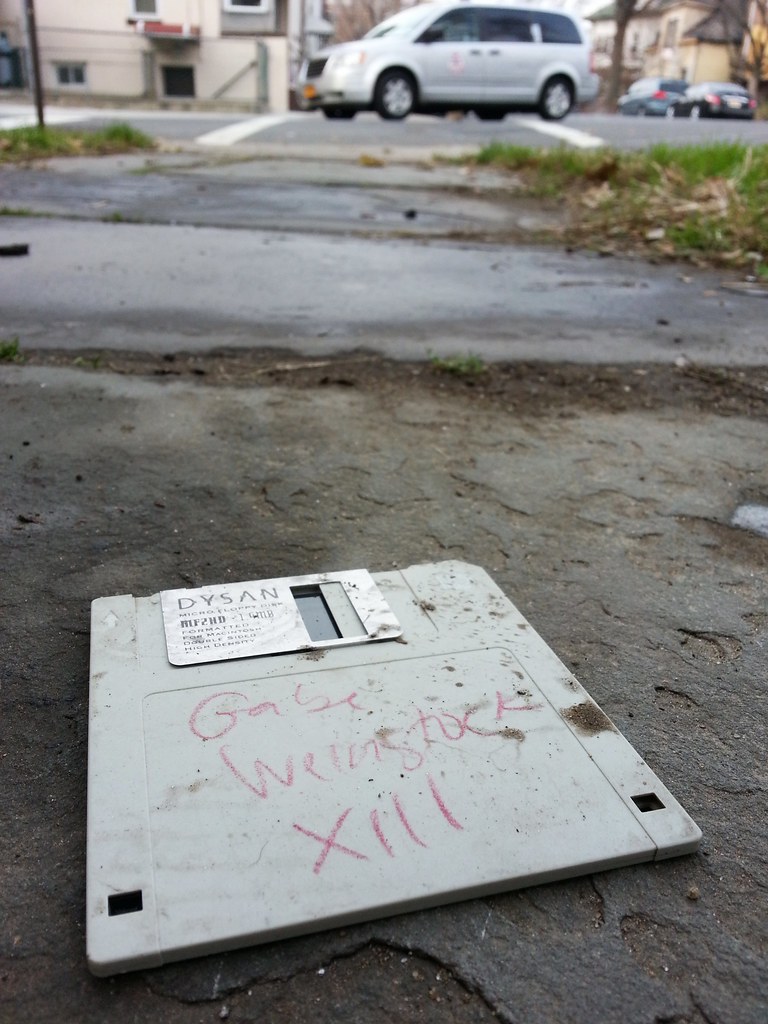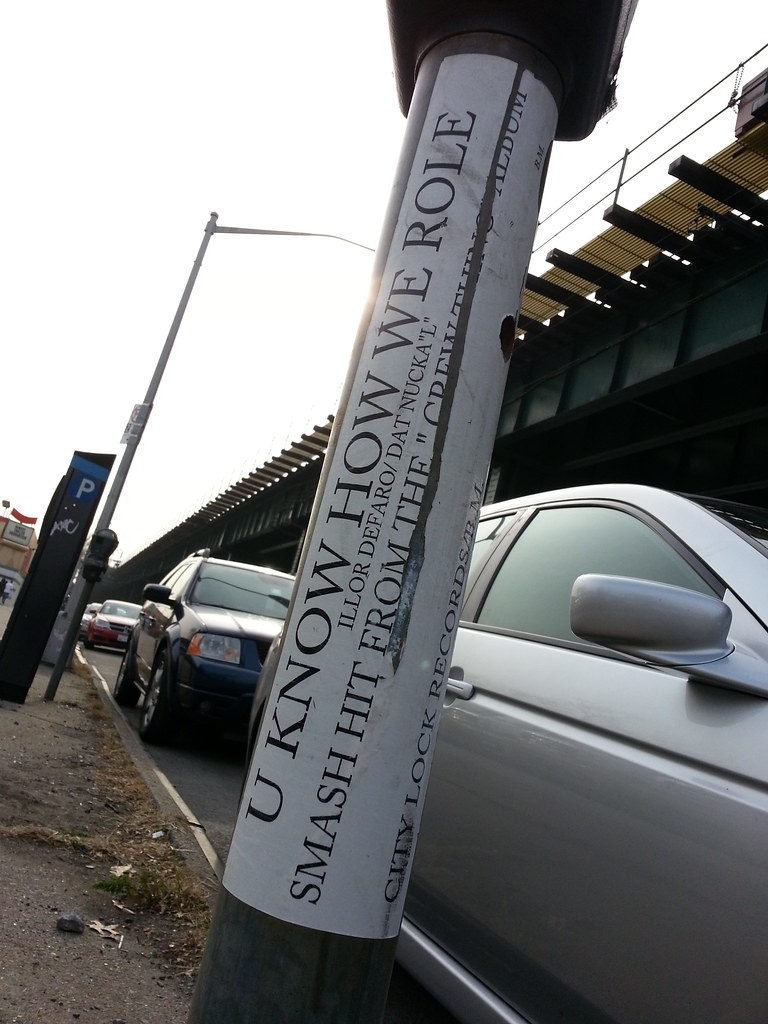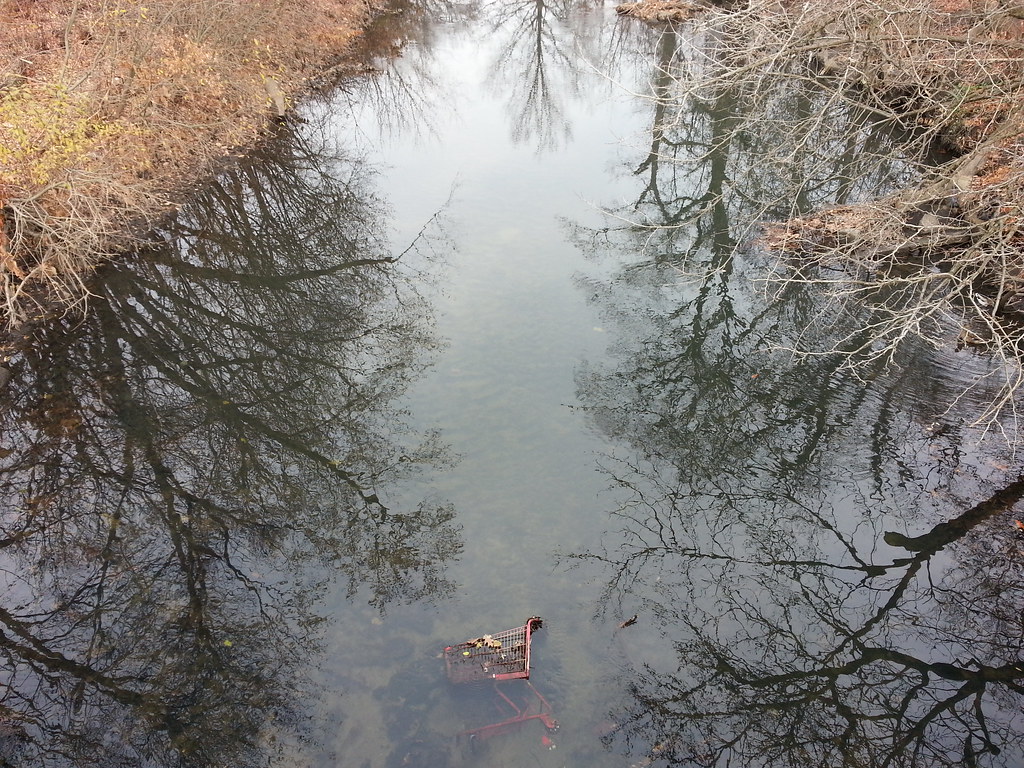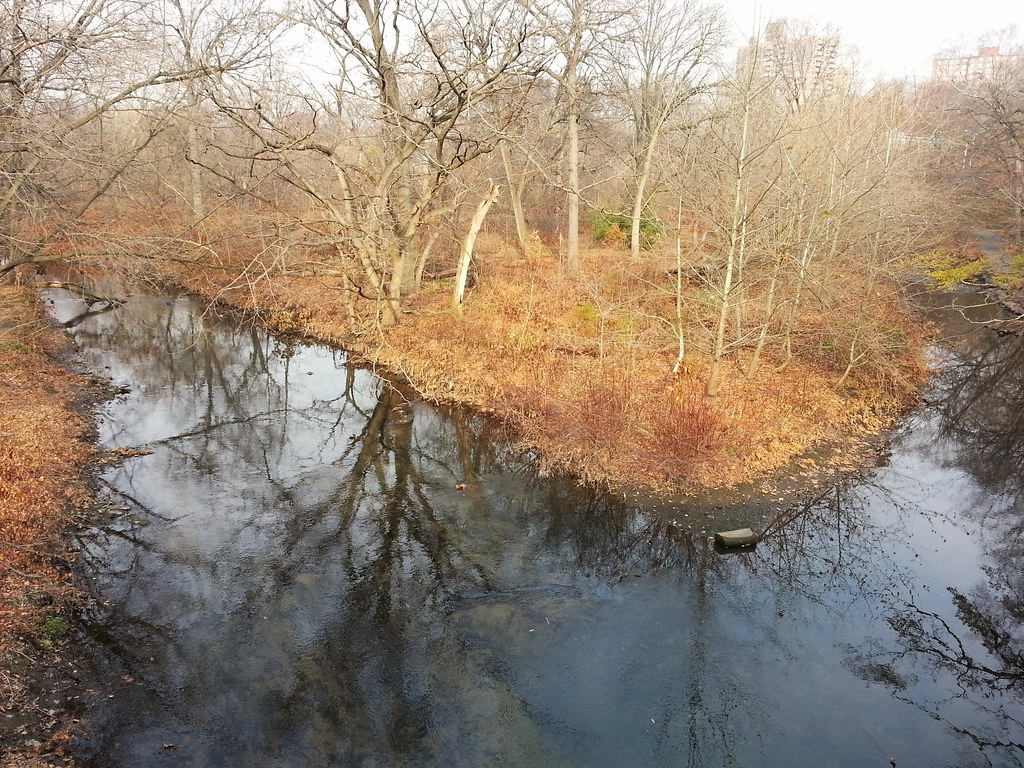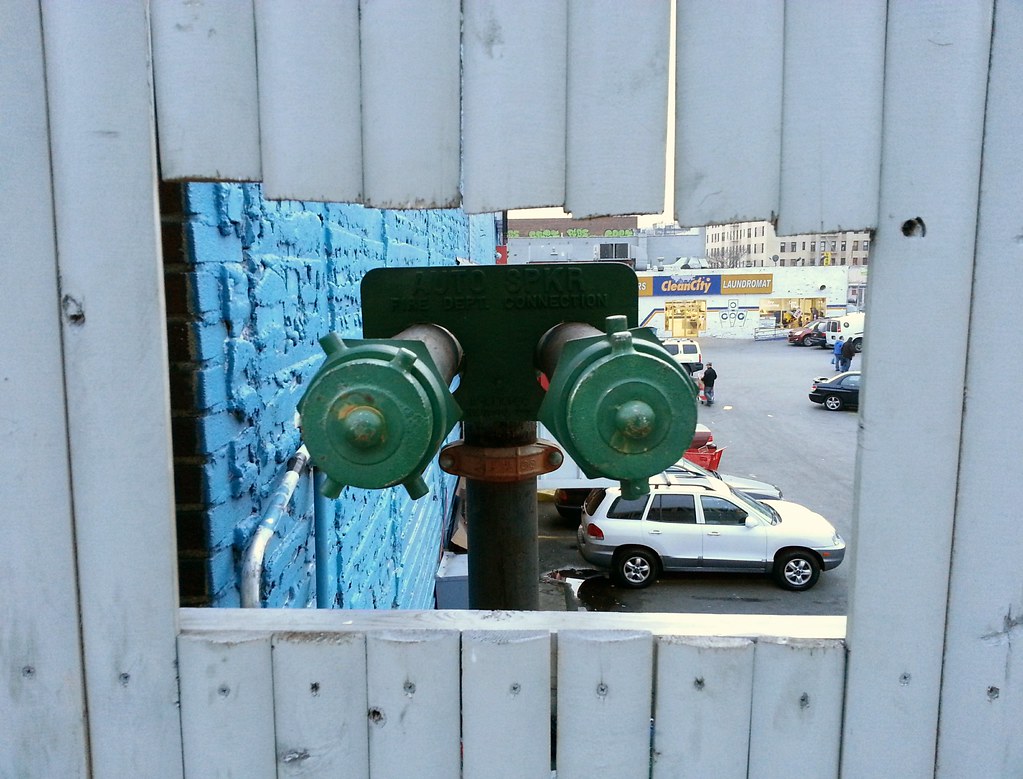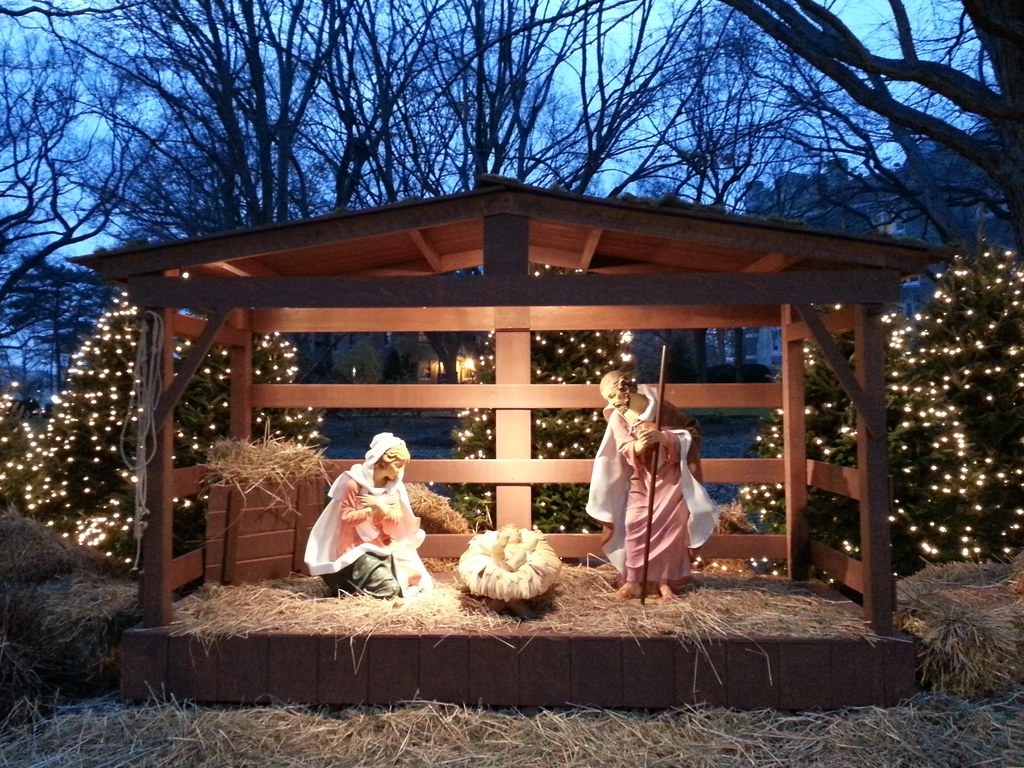
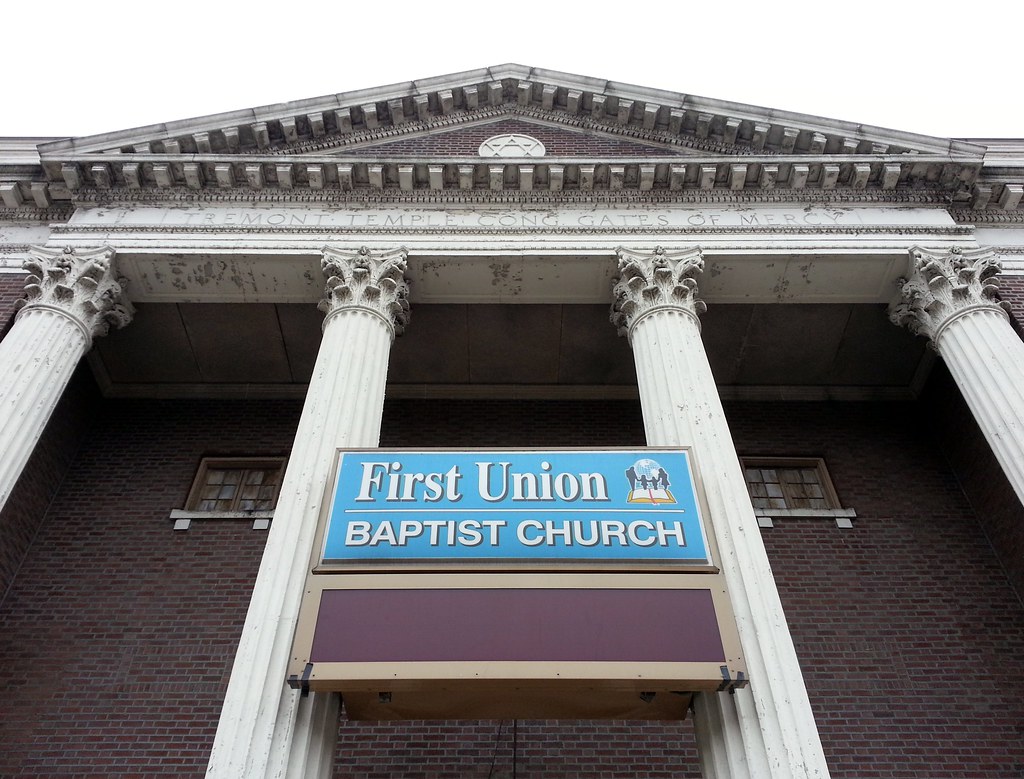
The former Tremont Temple/Congregation Gates of Mercy
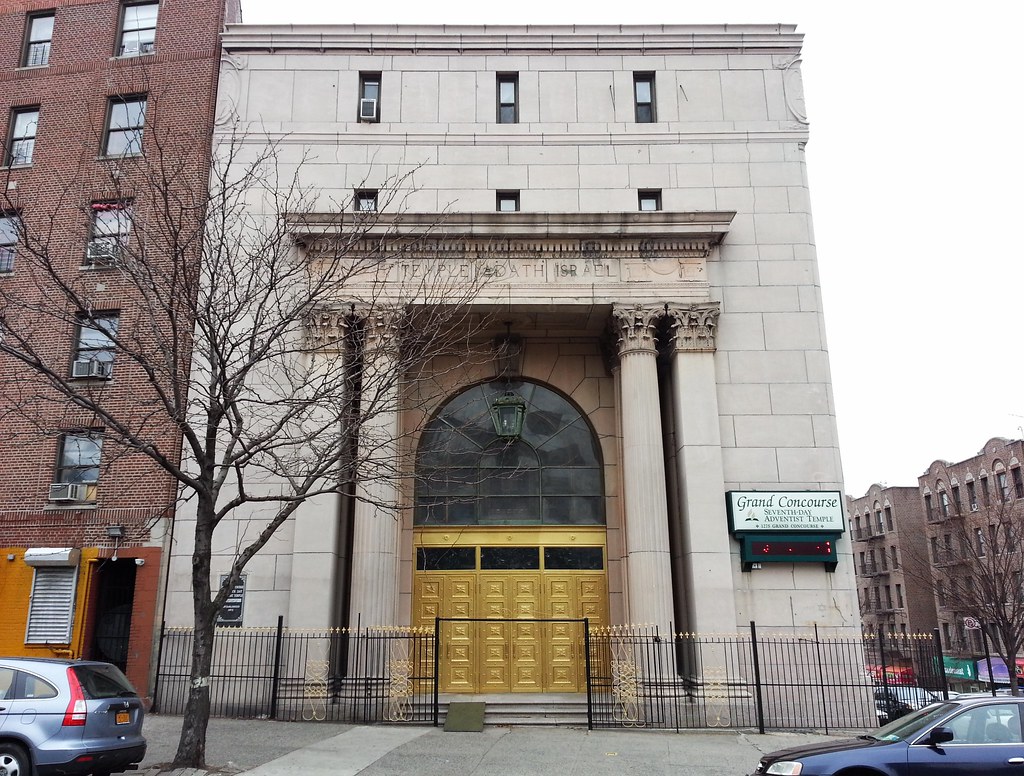
What is now the Grand Concourse Seventh-day Adventist Temple was originally Temple Adath Israel, one of four synagogues that once stood on a single block of 169th Street back in the days when the South Bronx was majority Jewish.
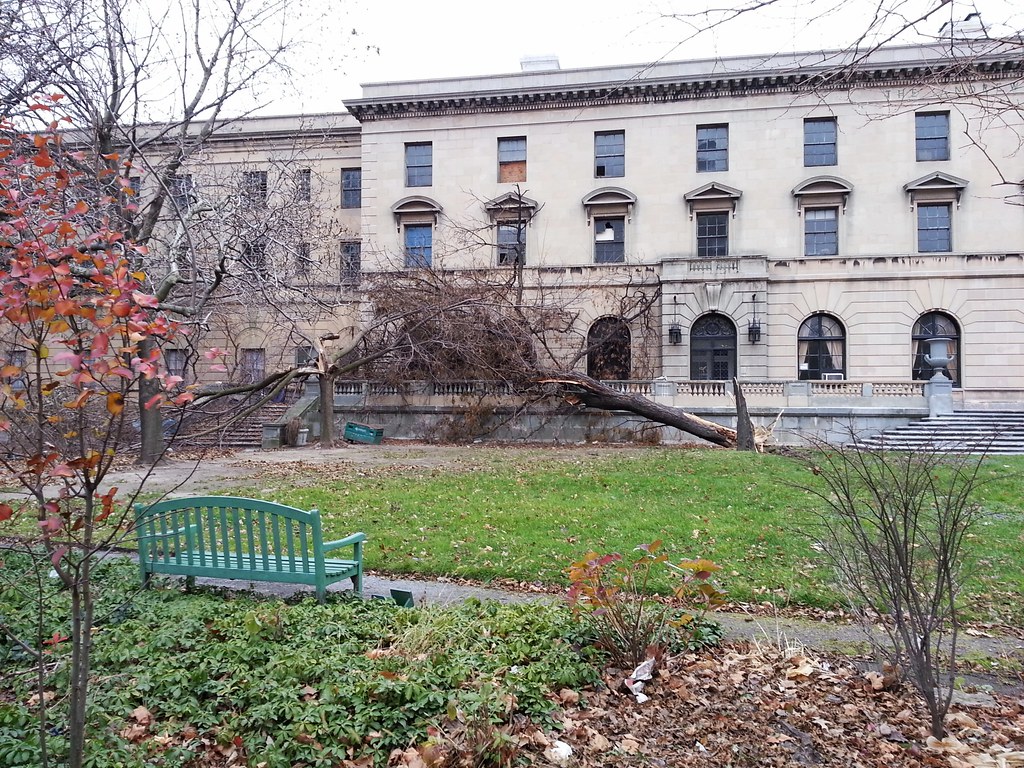
It seems that one of the thousands of trees felled by Hurricane Sandy has landed, and remained for over a month, on the porch of the Andrew Freedman Home. One of the city's more unusual institutions, the Home was built as a wealthy man's poorhouse — a refined retirement refuge for those of high standing who had lost their riches late in life. (The Graham Home for Old Ladies, which I passed by back in the summer, was founded on similar principles.) Mr. Freedman's motivation in creating this institution was elucidated in the Evening Tribune in 1924, the year the Home opened:
To have luxury all one's life and then in old age to face nothing but sordid penury; contempt where once was deference; ugly surroundings where once was beauty; rough shoulderings from coarse illiterates where once was protection and a circle of charming friends — this, indeed, is to be cast from heaven to the uttermost pit. Only those who have been reared in refinement can appreciate the unmitigated squalor of exile among the unintelligent.The article goes on to explain how society's safety net fails to protect the upper class:
The very poor have their free clinics, their free institutions for the aged. The impoverished middle class has also its quota of inexpensive hospital care and refuge. But who gives a thought to the bankrupt millionaire? Where is the place which will offer him congenial company and congenial surroundings when nothing remains from the days of his wealth except a taste for beauty?Equipped with "telephones, radio, phonograph, soft-voiced servants, tiled private baths, billiard rooms, card rooms, a library, and a livingroom so luxurious that even a modern millionaire could find no lack in it", the Home was "run like a first-class hotel" for many years, until, along with much of the South Bronx, it fell on hard financial times in the '60s and '70s. It was finally sold in 1982 and has since served as, among other things, a non-snobby old-age home for the regular poor, a day-care center, an event space, a home for community organizations, and an exhibition hall for site-specific artworks. As of this past spring, there has even been a ten-room bed-and-breakfast operating in the building, part of a program to provide training for local residents seeking careers in the hospitality industry.
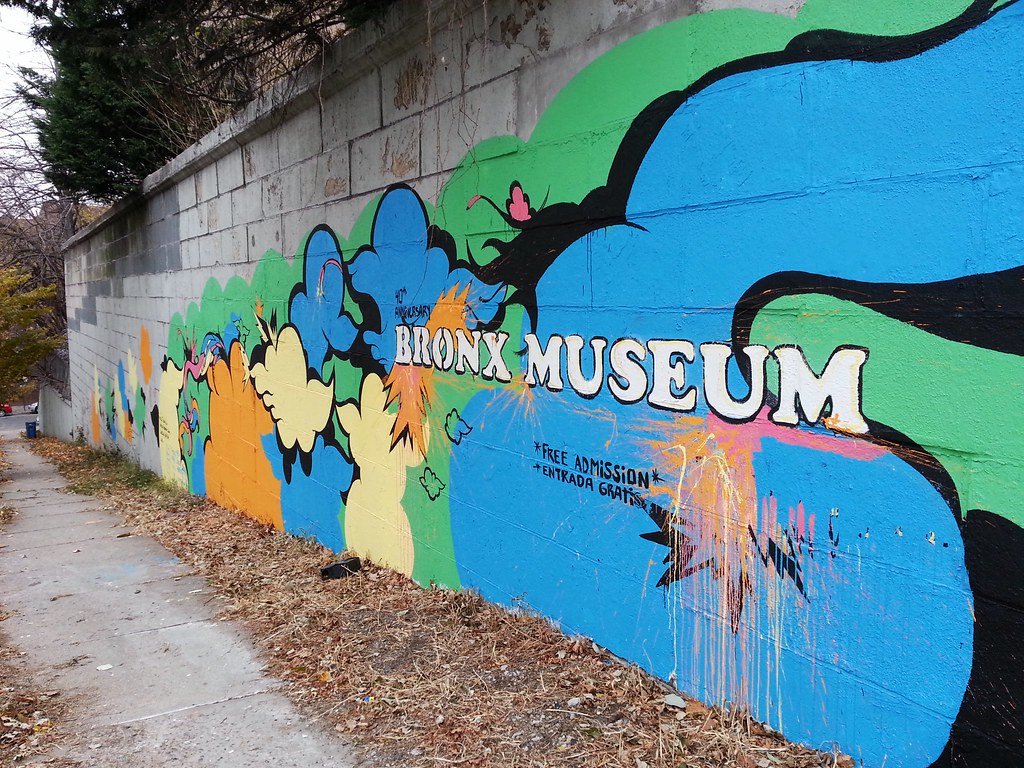
Founded in 1971, the Bronx Museum of the Arts resides catty-corner to this mural in a converted synagogue, which underwent a major expansion and accordionation a few years ago.
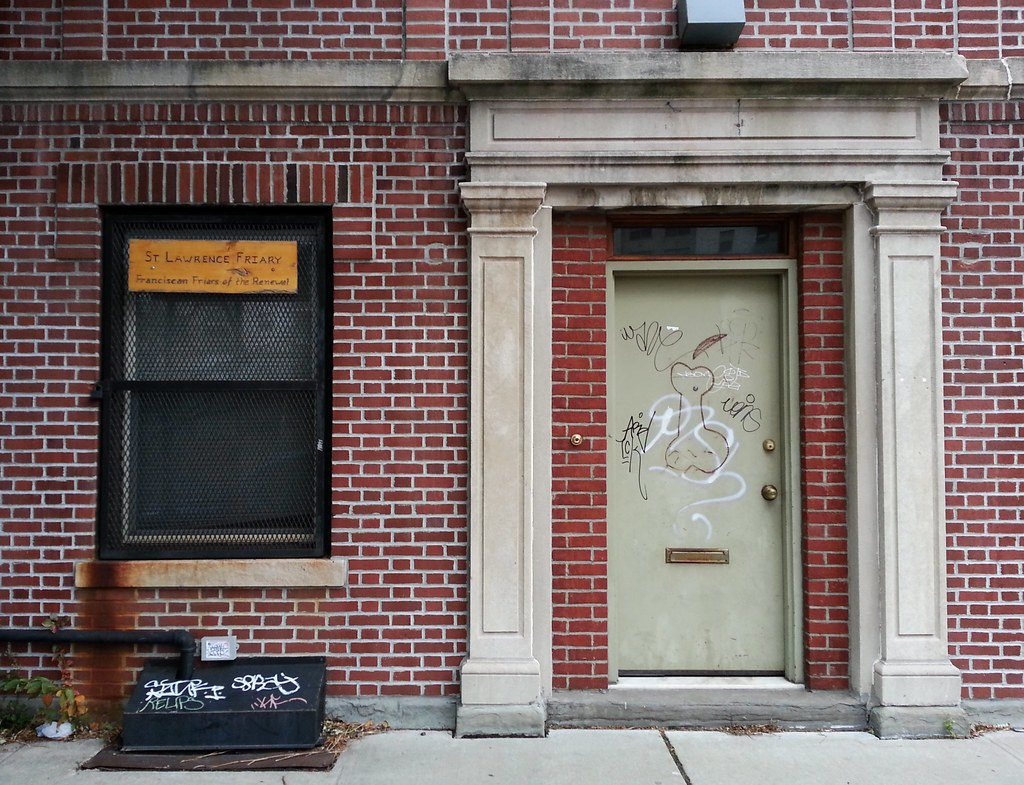
This is one of the friaries of the Franciscan Friars of the Renewal, a relatively young order founded in 1987 here in the South Bronx.
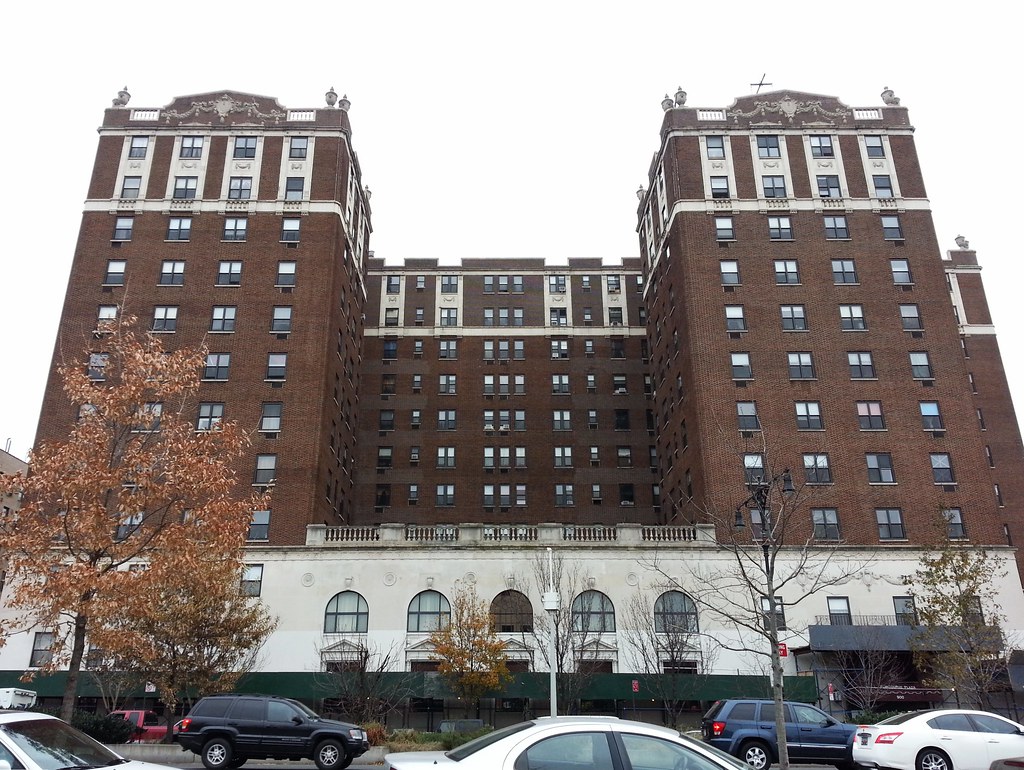
Opened in 1923, the same year as, and three blocks away from, the original Yankee Stadium, the once-grand Concourse Plaza was a center of the borough's social life during the mid-20th century. Big political dinners were held in the ballroom, presidential candidates stopped by to campaign, and the Yankees' star players could be found hanging out in the lobby every now and then. By the 1970s, however, the place had fallen into decline and become a welfare hotel. The city eventually took over the building and has operated it since 1982 as a senior citizens' residence.
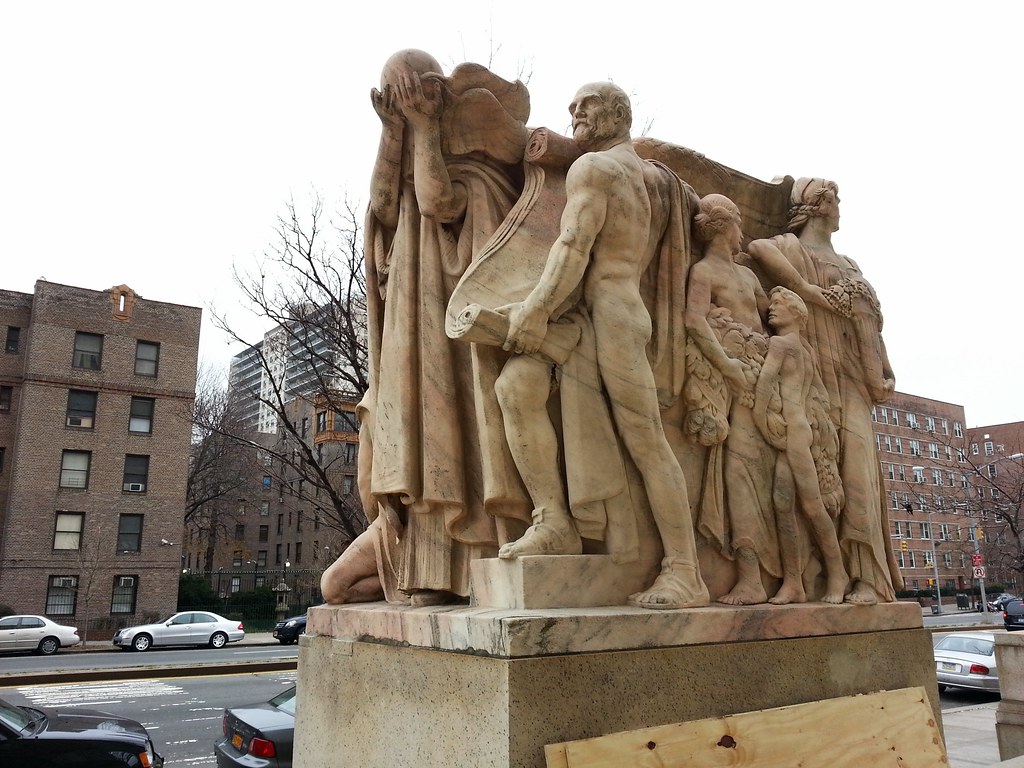
This is one of Adolph Weinman's eight pink marble sculpture groups adorning the entrances to the Bronx County Courthouse.
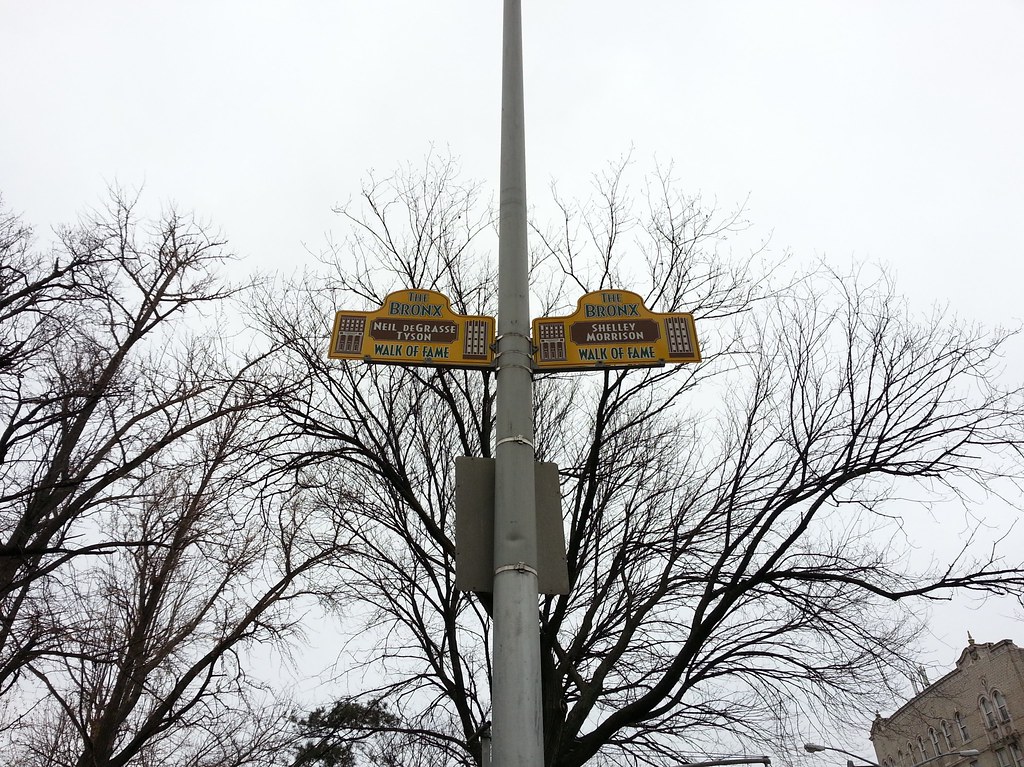
These signs line the Grand Concourse heading south from 161st Street, honoring Bronx notables like actress Shelley Morrison and astrophysicist Neil deGrasse Tyson (who was memorably flabbergasted by Isaac Newton's invention of calculus at such a young age).

This is the former entrance to the Bronx's first subway station, which opened in 1905. What was then Mott Avenue has been part of the Grand Concourse since 1927; this station is now known as 149 Street-Grand Concourse. One of the most popular graffiti writers' benches of the 1970s and '80s is located here, on the uptown platform of the 2 and 5 trains.
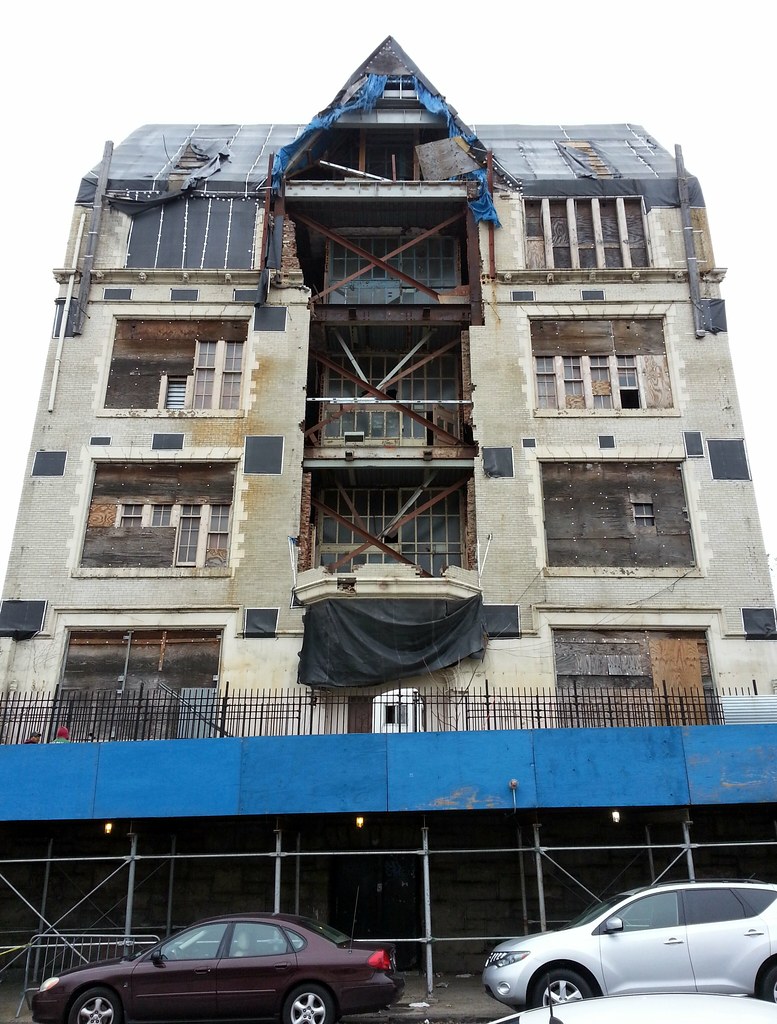
PS 31 ain't lookin' so swell these days. Another in the long list of Charles B.J. Snyder's masterpieces, it closed more than 15 years ago and has been falling into ruin ever since.

He and his menagerie are riding out the storm here at the Bronx General Post Office.

The interior of the Bronx General Post Office is most notable for its thirteen large frescoes illustrating "the nobility of the American worker", but it's also home to some charming Postal Service-themed artwork, including You Can Mail Around The World and Postmasters Through The Years.
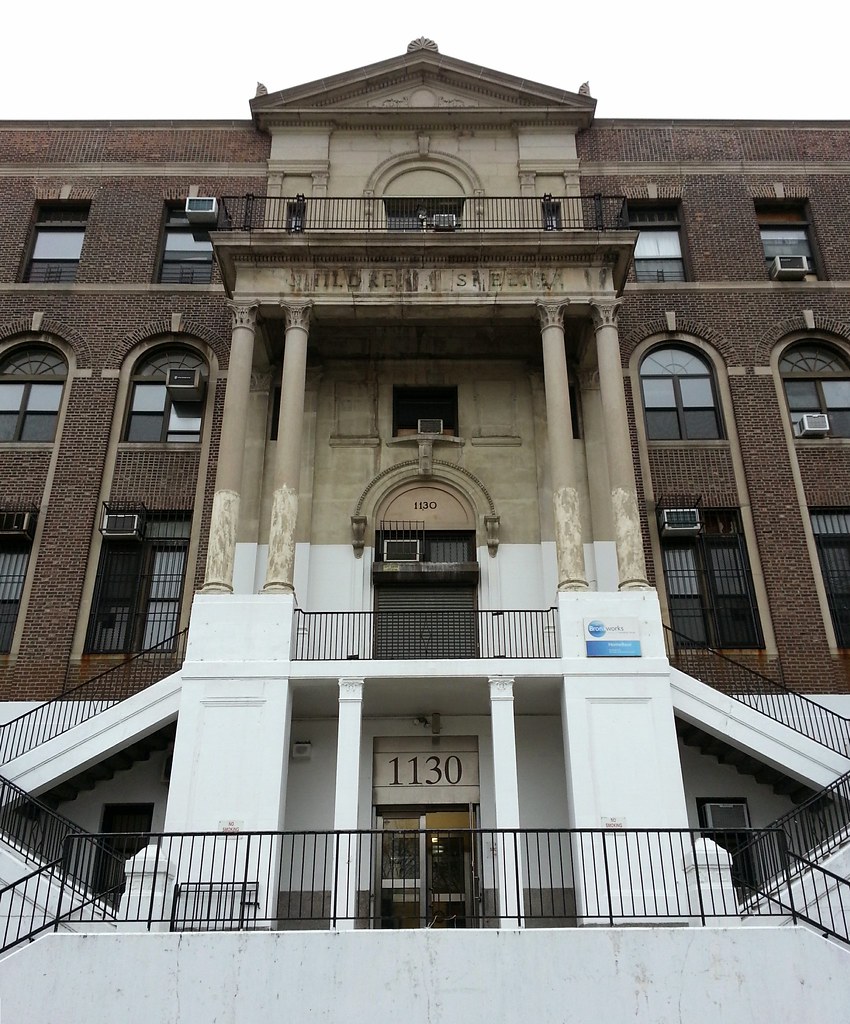
Opened in 1926, this "grand old pile" was built by the Bronx Society for the Prevention of Cruelty to Children, which I believe was the Bronx branch of the world's first child protective agency. You can still see a remnant of that era on the entablature above the upper set of columns; it looks like it once read "Children's Shelter". The building currently serves as the BronxWorks Community Center, and features an indoor pool that was recently brought back to life.
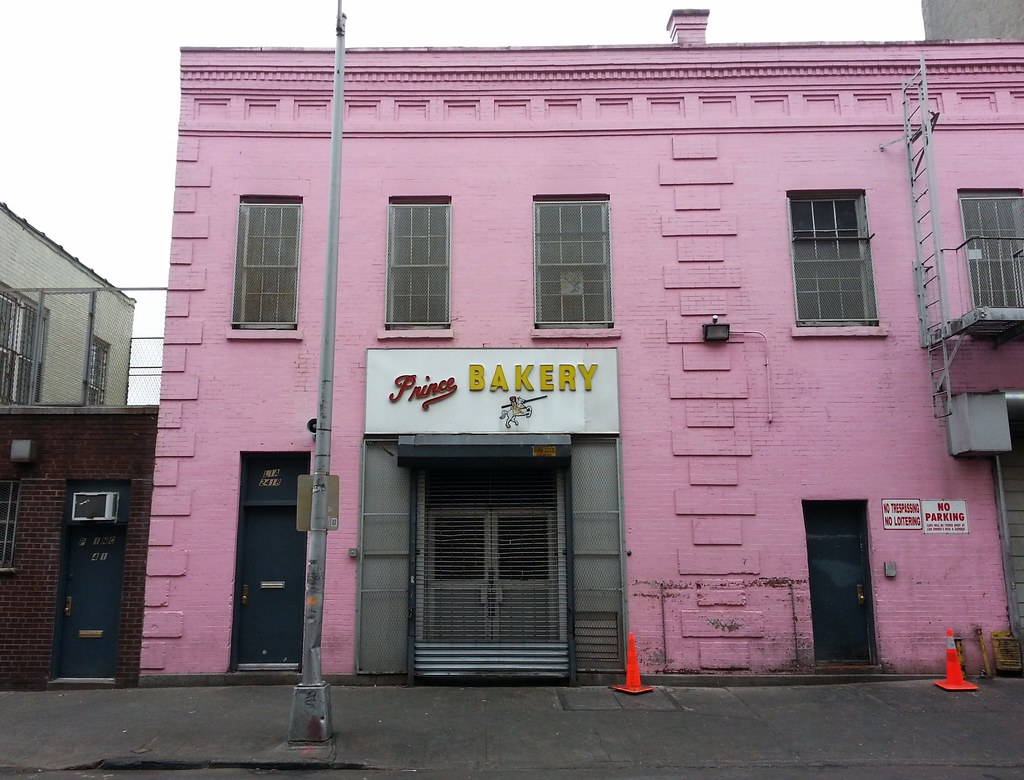
Apparently an exciting place to visit between 2 and 4 in the morning
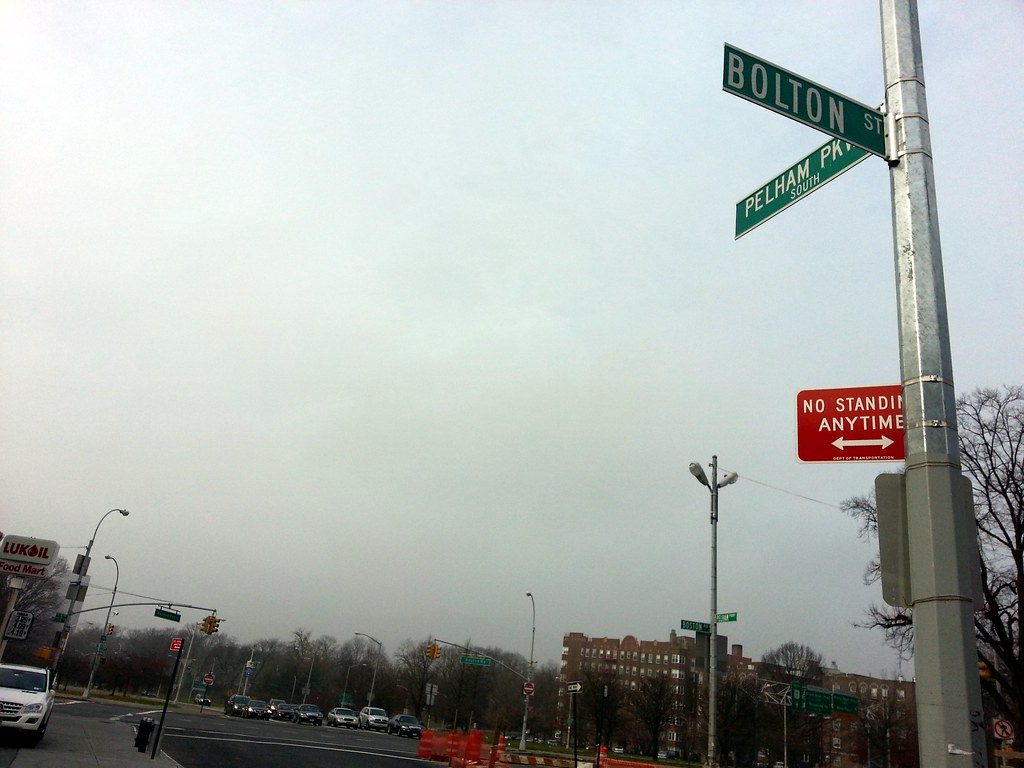
Two almost identically signed Bronx thoroughfares — Bolton St and Boston Rd — are separated by a single block. (You can get a better look at the signs here.)
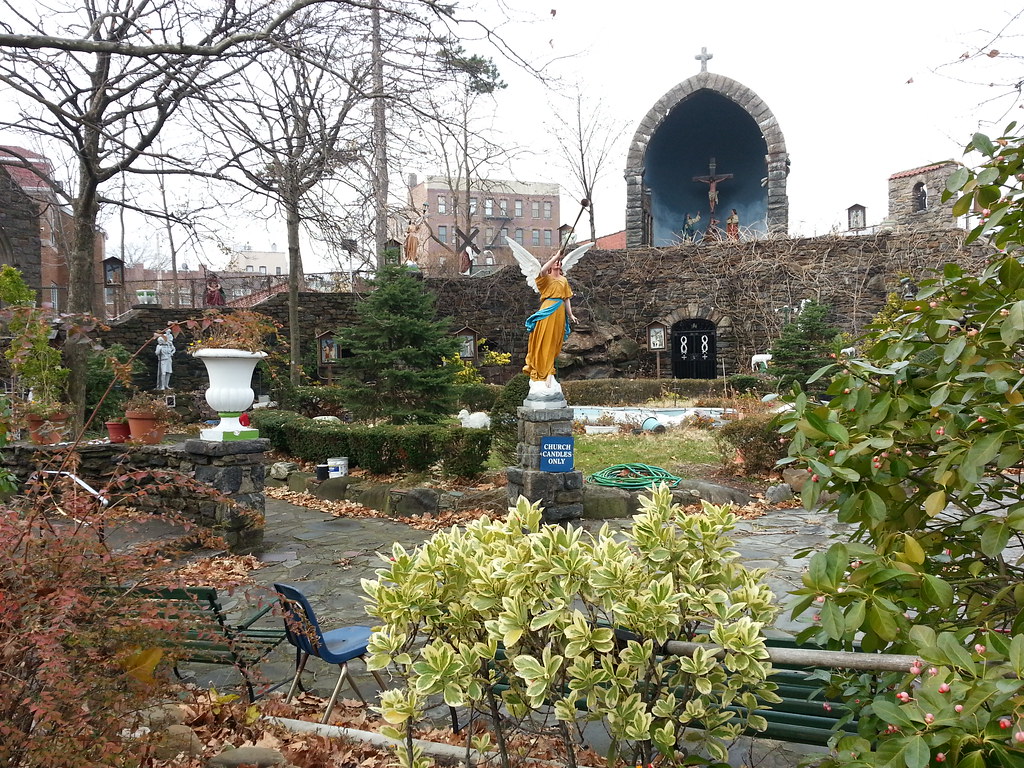
Adjacent to the grotto at St. Lucy's is this version of the Scala Sancta featuring life-size sculptural representations of the Stations of the Cross.

Amidst the hardwoods of the Bronx River Forest, a tree overturned by Hurricane Sandy airs out its roots.

Part of a five-arch span across the Bronx River
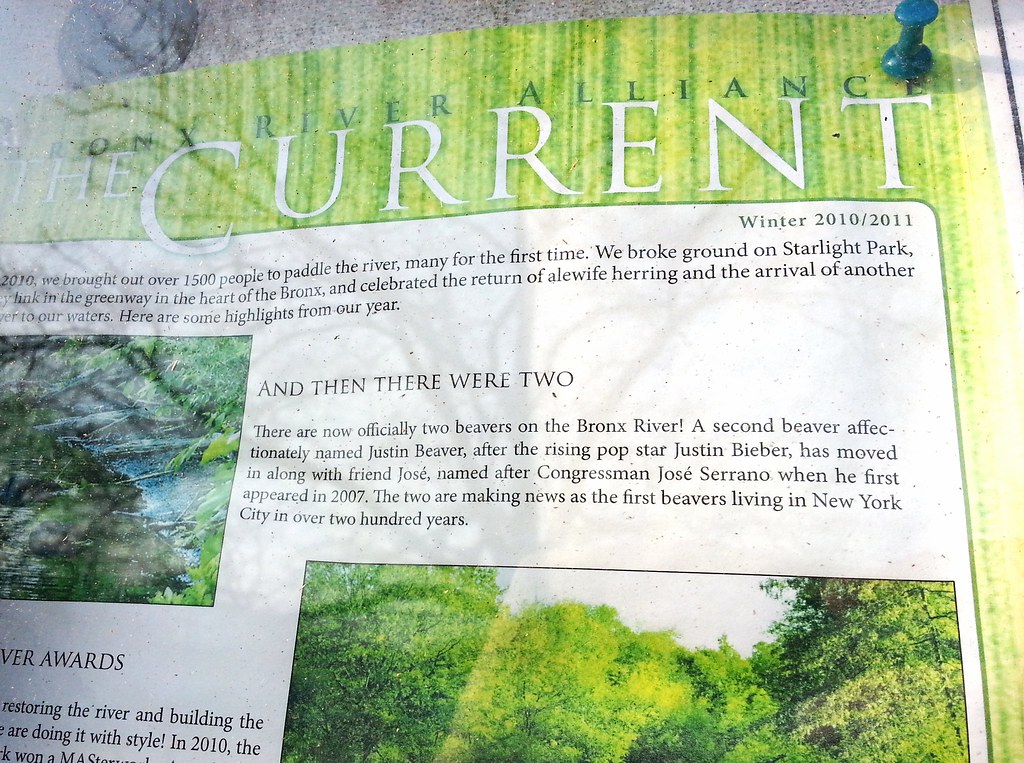
There are now two beavers living on the Bronx River. The newer one is named Justin Beaver. He has a Twitter account.
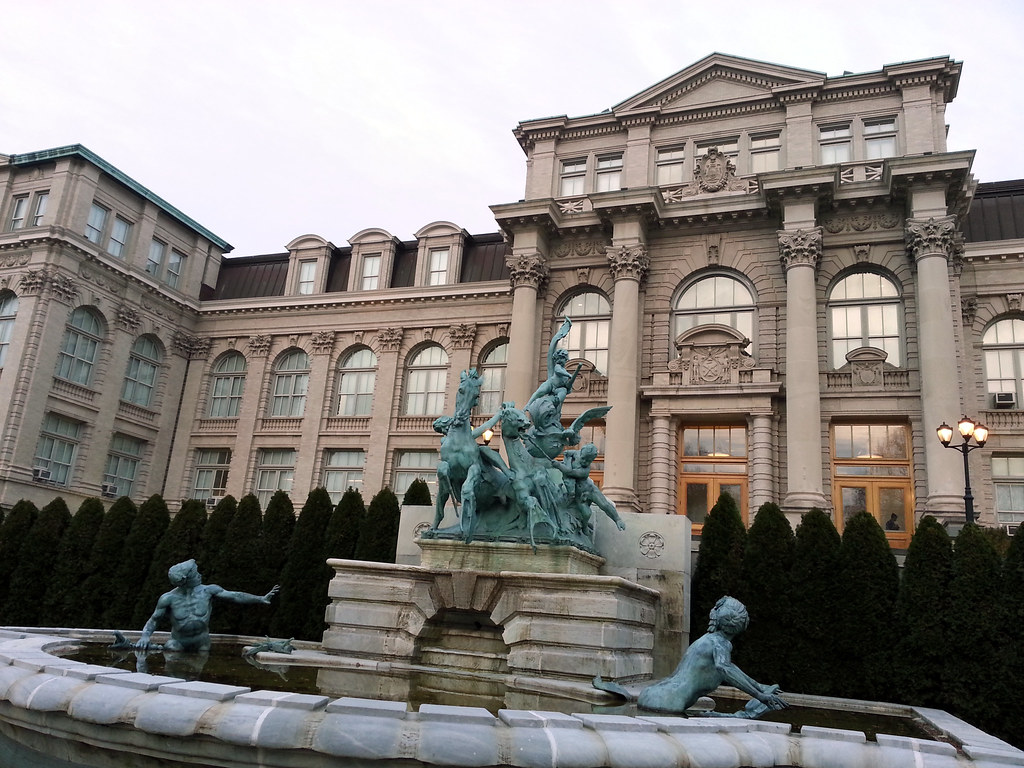
This "allegorical masterpiece of its era" stands against the backdrop of the New York Botanical Garden Library Building.

memorialized on cracked concrete at the New York Botanical Garden parking garage

